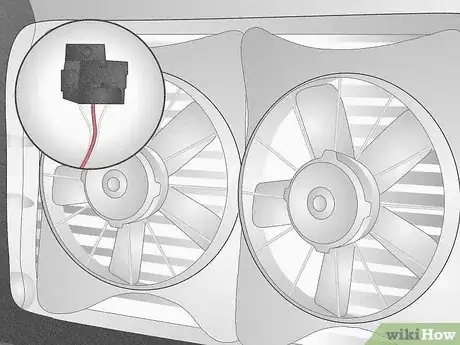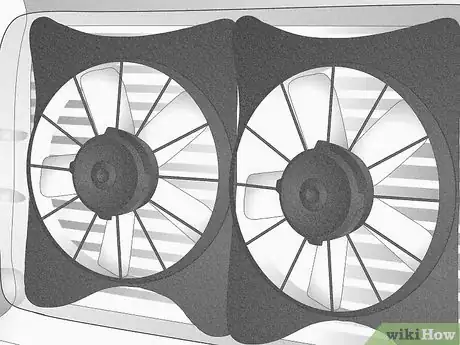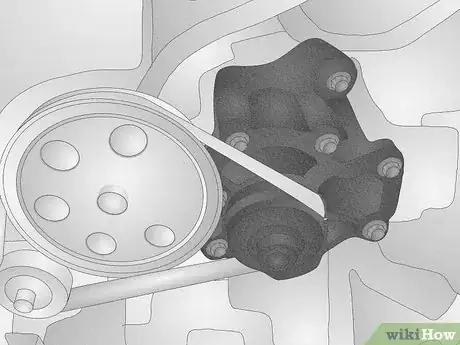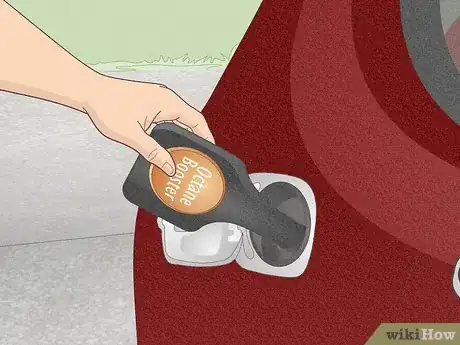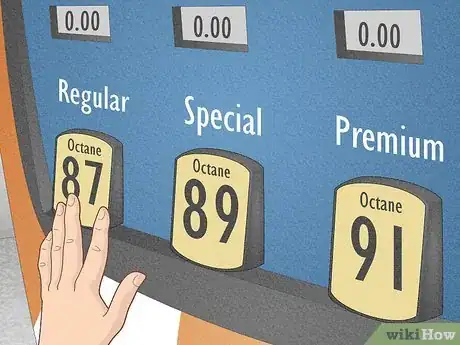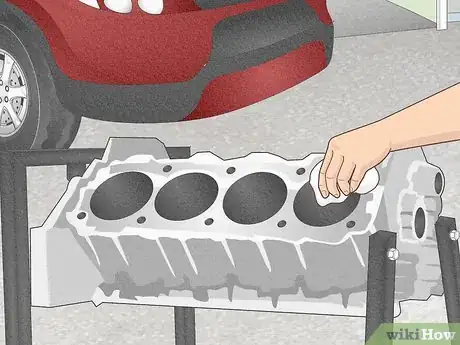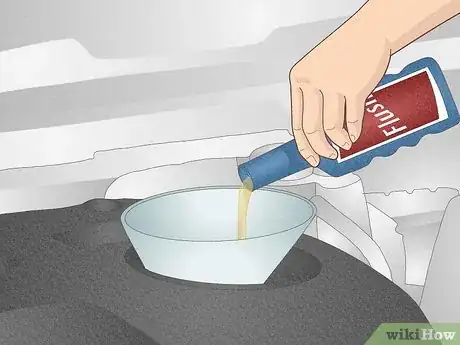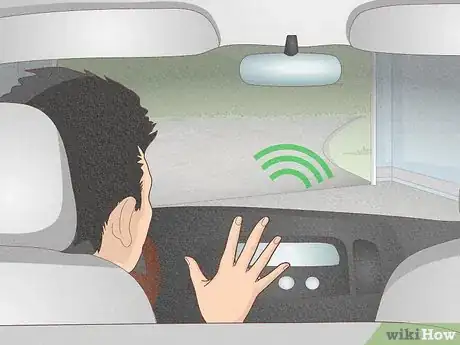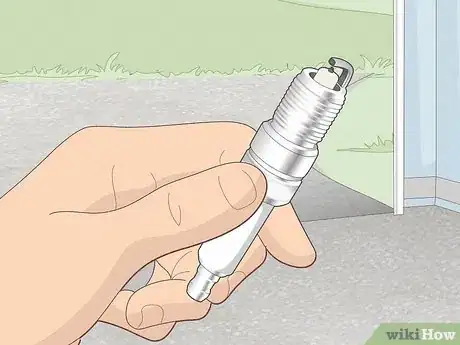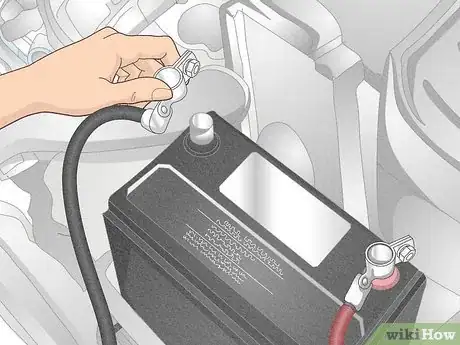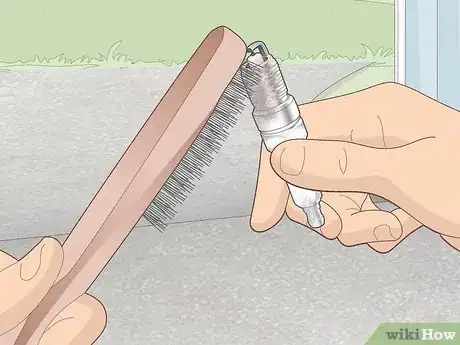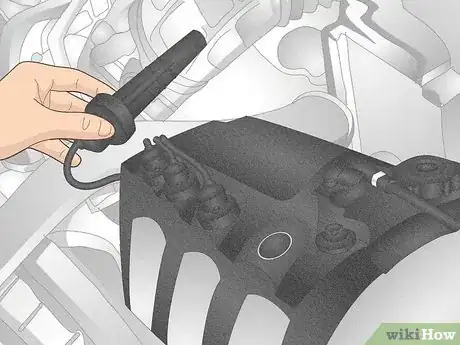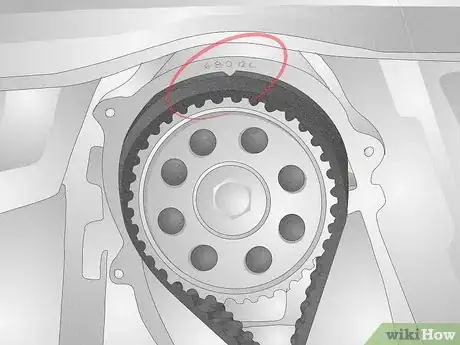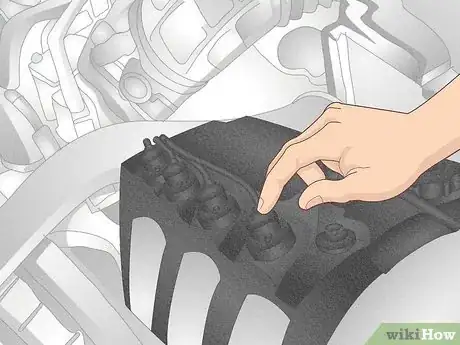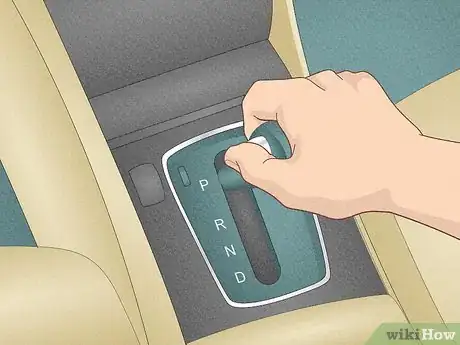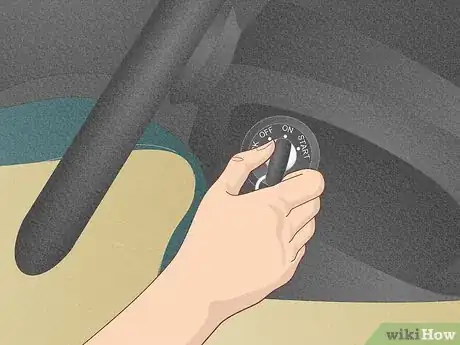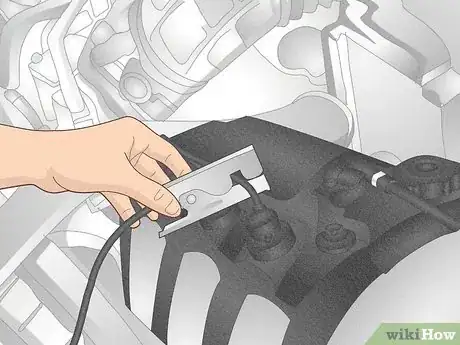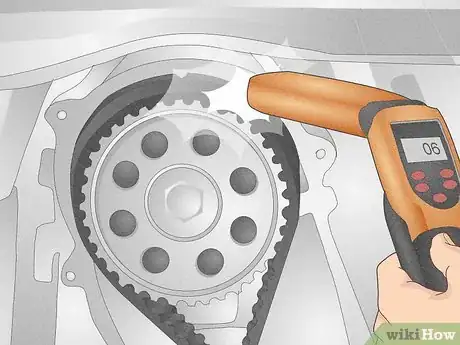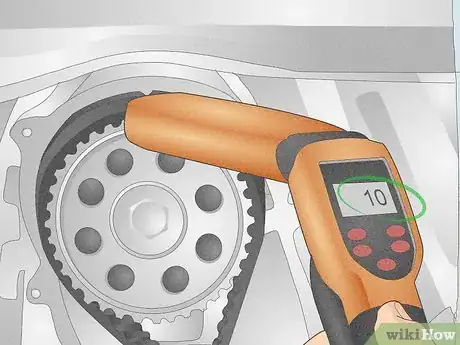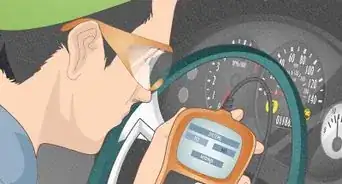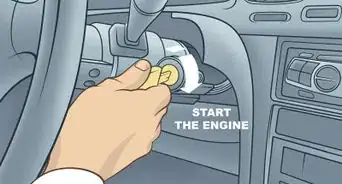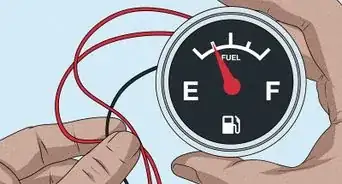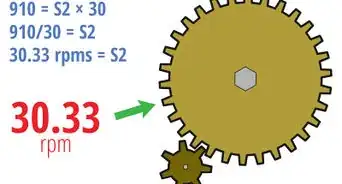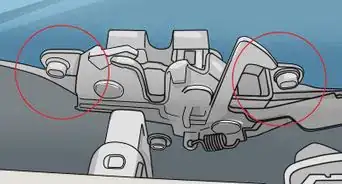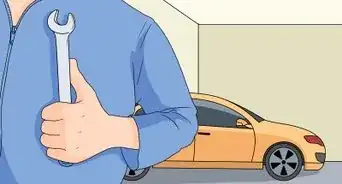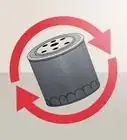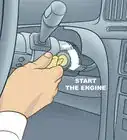This article was co-authored by Ed Beery. Ed Beery is an Automotive Specialist and the Owner of InTechgrity Automotive Excellence based in Denver, Colorado. With more than eight years of experience, he specializes in providing maintenance and repair services for both individuals and companies. Ed and the InTechgrity Automotive Excellence Team are approved by the American Automobile Association (AAA) for repairs and are Automotive Service Excellence (ASE) certified.
There are 7 references cited in this article, which can be found at the bottom of the page.
This article has been viewed 158,890 times.
A "knocking" sound from a car's engine while it's running is serious cause for alarm. This noise may be the symptom of inefficient combustion. There are several reasons that your car could be experiencing combustion problems. Some such as overheating, are simple to fix ― just turn your engine off until it cools down. Others are a bit more involved. Always try one remedy at a time so that you know what the cause was. This is a rewarding project that will keep you in touch with vehicle maintenance and help you throughout your lifetime of vehicle ownership!
Steps
Checking Engine Temperature
-
1An electric fan has a sending unit to turn it on when it reaches a certain temperature. Is the fan coming on when it's supposed to? If the temperature gauge or overheating indicator on your dash doesn't work you can replace the radiator cap with an aftermarket cap that has a built in temperature gauge. Also be sure to check the wiring on the fan.
-
2Some vehicles have a fan shroud that directs air to the radiator to assist in efficient cooling. Be sure it is secured properly.Advertisement
-
3Is the thermostat opening when it should? A typical thermostat will open around 195 degrees. One indication of a failed thermostat is when your heater doesn't put out much heat. Be sure your engine cooling system is properly filled with the proper coolant/water mix when diagnosing the thermostat this way. Whenever you add coolant mix be sure to check it with a tester that can be bought for just a few dollars at any parts store.
-
4A functional water pump is critical in keeping your engine at the proper operating temp. Be sure the belt hasn't come off. Be sure to coat belts with 303 UV protectant. Your belts will possibly outlast your vehicle when protected with this solution.
Increasing the Octane Level in your Fuel
-
1Check to make sure you are using the proper fuel. In order for the fuel to ignite at the proper time during the combustion cycle, you have to use at least the recommended minimum octane level. In the US this, is usually 87, but there are some higher end performance cars that require higher.[1] Check your owner’s manual if you are unsure what octane rating your car uses.
-
2Add an octane booster. If you discover that you have been using the wrong fuel, you can add an octane booster to your tank. It doesn’t matter much which brand you choose as they are designed to simply increase the octane level of your fuel, allowing you to use the gas in your tank.[2] Adding the booster is quite simple ― you just pour it into your gas tank.
-
3Buy the right gas. Using an octane booster to get through your last tank of low octane fuel is fine, but from now, on you want to buy the right kind of fuel. You should also keep in mind that whatever low octane fuel is left in your tank when you fill up will mix with your new fuel, so if knocking continues, go ahead and use the octane booster for another fill-up or two until most of the low octane fuel is gone.
- It is also thought that using a "top-tier" gasoline such as Shell or Chevron will decrease engine deposits that can cause knocking.
Cleaning Your Combustion Chamber
-
1Consider cleaning your cylinders. Again, using the wrong fuel can be an issue. Not only can it cause knocking by igniting at the wrong time, it can also leave excess contaminants in your cylinders as a result of poor combustion. If you are now using the proper fuel, you may need to clean out the contaminants left by past fuels.
-
2Use a fuel additive. While most fuels have a specified amount of detergent in them (at least in the US), this may not always be enough to keep your combustion chamber clean. Using top tier gasoline brands will provide more detergents that help keep your engine clean. Another way to clean your cylinders is to add a detergent to your fuel. This is as easy as buying a fuel additive at your local parts store and pouring it into your gas tank at your next fill up.[3]
- This step is very simple. Just choose an additive and follow the directions on the bottle for putting it in your gas tank.
-
3Flush your engine. If detergent hasn't gotten your engine running right, you can try an engine flush such as Seafoam. The flush reacts with the carbon deposits to remove them from your intake system, including the combustion chamber. Be aware that, when starting your engine for the first time after the flush, there will be a lot of smoke.
-
4Test your car. Start the engine and listen closely. Your knocking engine should be running smoothly now.
Inspecting/Replacing your Spark Plugs and/or Wires
-
1Consult your owner's manual or a local parts store to find the correct spark plugs. A faulty spark plug OR wire can be the cause of engine knocking, and is bad for your engine overall. Check for corroded spark plug ends. If a plug wire is left disconnected it has the potential to collect moisture. Did the previous owner let this happen and now months later corrosion has taken its toll? Remember to always check part numbers on the parts you buy. [4]
-
2Prepare to work on your vehicle. Find all of the tools you will need, such as a spark plug socket and gap gauge.[5] Turn off your engine and if you think the vehicle will magically try to turn on during this process you can unhook your battery terminals.
-
3Check your spark plugs. You want to be sure that replacing the spark plugs will help. You can usually tell if there is a problem just by the residue left on your spark plug. A normal plug should have only brownish grey residue on the side electrode. If this is the only residue and the plug is otherwise intact, you should just clean it with a wire brush and fuel injector cleaner rather than replace it.[6]
-
4Remove and replace your spark plugs an/or wires. This is a relatively easy job but could take about 30 minutes to 1 1/2 hours depending on the design of the engine. Some plugs take just the right size of ratchet to fit into tight spots. Take photos to remember how parts of the engine go back on if they need removed to make the job easier.[7] If you have never changed spark plugs before you should consult How to Change Spark Plugs in a Car
- Always replace spark plugs one at a time to avoid backfiring.
-
5Hook your battery terminals back up. Remember to do this in the correct order. First hook up the positive cable (usually red) and then the ground wire (usually black).
Checking Your Car’s Timing
-
1Find the timing mark on your engine. This is usually located in a small gap in the transmission bell housing. You are looking for a gap with short marks perpendicular to it. The marks will be numbered to eight or twelve, with zero in the middle. The word “Before” and “After” may also be stamped into the metal near the gap.
- Sometimes the gap is covered with a plastic or rubber cap. This keeps dirt out of the bellhousing.
-
2Identify spark plug number one. This is the plug you should use to check engine timing. You can look in your owner’s manual or service manual if you are unsure which spark plug is number one on your vehicle. It is not necessarily the first one on either end of the block.
-
3Set your park brake. Make sure that your car is parked safely and that it will not move while you are working.
-
4Turn on your engine. You should let the engine warm up before checking the timing. This will yield the most accurate results.
-
5Connect your timing light to your number one spark plug wire. Clip the lead over the plug wire and turn on the light. Be sure that you are using the number one plug, otherwise your readings will be incorrect.
-
6Aim the timing light at the timing mark. When the spark plug fires, it will cause the strobe on the light to flash. This will show you what number the timing mark is on at the time the piston fires.[8] Record these numbers.
-
7Interpret the results of your timing test. The numbers represent degrees from top dead center (TDC) of the piston in the number one cylinder. What this means, is that the mark indicates how far from the top the piston is when the spark ignites the fuel. If your numbers are in the range specified in your owner’s manual or service manual, your timing does not need adjusted.[9] If not, you will need to adjust your timing to fix the knocking.
Community Q&A
-
QuestionHow do I stop my car from knocking?
 Community AnswerFollow the instructions listed in the article above.
Community AnswerFollow the instructions listed in the article above. -
QuestionWhat should I do if I can't get the knocking to stop?
 Doug FontaineCommunity AnswerIf your car has a rod knock, chances are are this engine will need very expensive repair or replacement.
Doug FontaineCommunity AnswerIf your car has a rod knock, chances are are this engine will need very expensive repair or replacement. -
QuestionMy car just started stalling and making a knocking sound. It had no oil, so I topped it off, but it still rattles. Can it be saved?
 Community AnswerIt's done; it needs a new/rebuilt engine. Your rod bearings and main bearings are probably gone.
Community AnswerIt's done; it needs a new/rebuilt engine. Your rod bearings and main bearings are probably gone.
Warnings
- Knocking is not fixed by switching to synthetic oil. IF your knocking is a result of an oil issue, it is that your car is very low on oil and you should add oil IMMEDIATELY to avoid serious damage.[11]⧼thumbs_response⧽
- If the procedures listed above do not cure the knock, it may be an indicator of a more serious problem. Have a professional check your car as you may be having issues with your cooling system, your drive belt components, crankshaft bearings, or flywheel. Only attempt to diagnose or repair these serious problems if you have mechanical experience.[12]⧼thumbs_response⧽
Things You'll Need
-
Increasing Octane Level
- Octane Booster
-
Cleaning Your Combustion Chamber
- Fuel Additive
- Engine Flushing Agent
-
Replacing Your Spark Plugs
- Ratchet
- Spark Plug Socket
- Gap Tester
- Wire Brush
- Fuel Injector Cleaner
-
Checking Your Car’s Timing
- Hand Tools
- Timing Light
References
- ↑ http://www.theglobeandmail.com/globe-drive/culture/commuting/why-your-cars-engine-might-be-knocking-hint-its-not-the-oil/article11998780/
- ↑ https://www.carsdirect.com/car-repair/3-causes-of-engine-knock
- ↑ https://www.carsdirect.com/car-repair/3-causes-of-engine-knock
- ↑ https://www.carsdirect.com/car-repair/3-causes-of-engine-knock
- ↑ http://www.familyhandyman.com/automotive/car-maintenance/how-to-replace-spark-plugs/view-all
- ↑ http://www.dummies.com/how-to/content/how-to-assess-trouble-by-checking-your-spark-plugs.html
- ↑ http://www.dmv.org/how-to-guides/plugs.php
- ↑ http://auto.howstuffworks.com/timing-light.htm
- ↑ http://auto.howstuffworks.com/timing-light.htm
About This Article
If your car engine’s making a knocking sound while running, there are a few possible causes. Check your engine temperature gauge on your dash to rule out temperature problems. Using low octane fuel is a common cause of knocking sounds. If you’ve used low octane fuel, stick to a minimum octane level of 87 in the future, but in the meantime, you can add an octane booster to your tank. You should also check your spark plugs for any unusual residue. Brownish grey residue is fine, but anything else should be a cause for concern. To rule out engine timing problems, use a timing light to check your engine. If everything else is fine, you may need to clean your cylinders with a fuel system cleaner. If you still can’t find the cause, take your car to a mechanic. For more tips, including how to flush your engine, read on!
